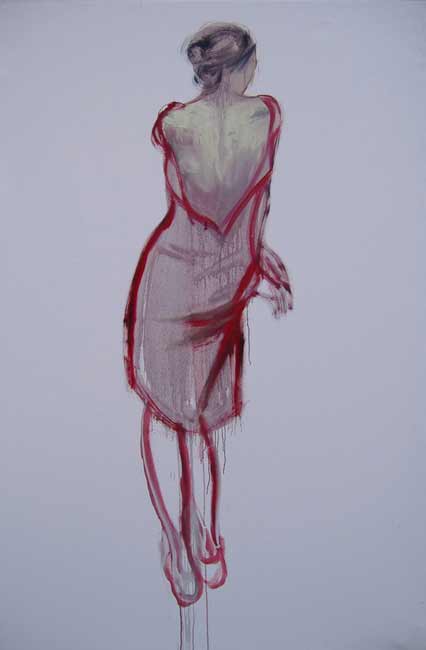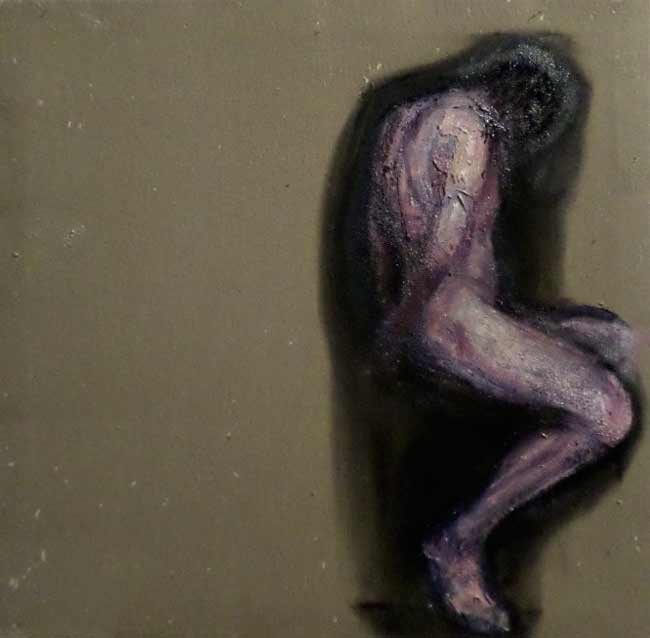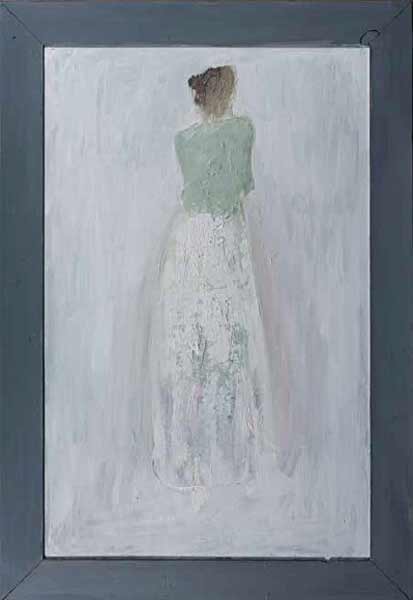Angelo Bordiga, dramatic painting with raw colors

THE PICTORIAL RECIPES BY ANGELO BORDIGA
by Michele Tavola (excerpt)
Leftover carpet, old sheets, cheap mats, and scraps of fabric like those found in the back rooms of unfashionable haberdashers. Any mount is good for the pictorial aggressions of Angelo Bordiga. Naturally also traditional canvases, but in this case, before sketching the composition, they are submerged in a layer of dense and highly tactile colour. Oil usually, but any pigment found to hand can be useful. For Bordiga is only interested in the act of painting and is willing to do it – by borrowing the slogan coined by the African-American leader Malcolm X – “by any means necessary.” Attacking any surface with whatever instrument allows him to paint. The unconventional mounts become an integral part of the very same work, the artist uses the texture and chromatic values accordingly in building compositional systems.

People will talk afterwards about the men and women who populate his strange pictorial humanity, but one must add a few thoughts on the abstract and almost monochrome backdrops which play a fundamental role. Bordiga puts a silent painting up for show, in the sense that it is completely devoid of narrative: there is no story, no action, nothing happens and tales are not encountered to listen to or interpret. It is the colour that breaks through the silence like a scream in the night. The mixtures of pigment are the chords which characterize the tonality of the pictorial symphony, the continuous bass that bestows the character of the piece. Now bleak and gloomy, now violent as only red blood can be, now white and pure.

Whose the shadows roam the canvas, is not known. Among the large expanses of colour characters stand out who are tired of living lives that are more like a burden to carry than a divine gift, ectoplasms by indefinable identity, emblems of lives that have passed through the history of humanity without leaving a trace, looking for a meaning that is difficult to explain and even harder to understand.
In front of figures or black backgrounds we can understand how Bordiga’s eye swam across the folds and subtle tonal passages of the draperies of Frans Hals and Edouard Manet. It is easy to imagine that, like a new Faust, he would have willingly closed a deal with Mephistopheles just to be able to spy on Goya whilst achieving the black paintings.

And the white of wedding dresses cannot fail to suggest a careful study of quick and secure touches by Boldini. The late painting by Rembrandt, the flakier and technically daring one, was definitely a battlefield for the conquest of alchemical formulas. Or “pictorial recipes”, as Bordiga calls them, which he faces each day and that are the real reason for painting.
This way of working and of understanding the painting, as he himself says, stems from the unavoidable teaching learned in the classrooms of the Academy of Brera from Beppe Devalle, his first teacher, cultured artist and great painter, who died in 2013, he was committed and taught that the art of painting comes from (actual) painting.
The investigation, vivisection and personal review through his own awareness of “pictorial recipes” developed over centuries are the viaticum for a new art of quality. The styles of the teacher and the student, as it should be, do not have anything to do with each other, but Bordiga has certainly picked up from Devalle a heavy and challenging heritage, that has all the flavour of a mission and a radical life choice that goes well beyond the confines of a canvas, but in the confines of a canvas, all reasons for being are found.
Angelo Bordiga
Jun 10, 2017
